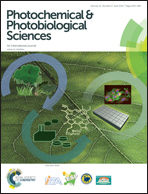Degradation of two fluoroquinolone antibiotics photoinduced by Fe(iii)-microalgae suspension in an aqueous solution
Abstract
The widespread presence of fluoroquinolone antibiotics (FQs) in natural ecosystems is a health hazard for humans and other living organisms. In this work, the photochemical degradation process of two antibiotics in the presence of Fe(III) and marine microalgae has been studied. Two fluoroquinolone (FQ) antibiotics, enrofloxacin (ENR) and ciprofloxacin hydrochloride (CIP), and two marine microalgae, Platymonas subcordiformis and Isochrysis galbana, were investigated under irradiation with a high-pressure mercury lamp (HPML) in a laboratory-scale experiment. The effects of the initial concentration of antibiotics on the degradation of these two FQs in Fe(III)-algae suspensions were also investigated. On the basis of the information in this study, compared to other systems, the efficiency of photo-degradation of the two FQs is better at lower FQ concentrations in the Fe(III)-algae system. Moreover, the low initial concentration of antibiotics benefits the photochemical process of antibiotics. This work demonstrated that the Fe(III)-algae system is an interesting and valuable research area and could be considered as a promising photochemical system for seawater remediation.


 Please wait while we load your content...
Please wait while we load your content...